Table of Contents |
What factors, other than price, might affect how much of a good or service a supplier chooses to supply? From the supply side of a market, a number of factors beyond price affect suppliers’ willingness and ability to offer products.
EXAMPLE
When workers concerned about the health effects of Covid became less available, hotels began using robots to make room deliveries replacing hotel workers. In this case, an event changed the overall supply.The list below provides a concise summary of the non-price factors that economists recognize as affecting the overall supply of a product. A change in any one of these factors will alter an individual seller’s willingness and ability to offer a product in a given time period and cause a shift in supply.
Lower prices on inputs such as land, labor, capital or technology are favorable events for suppliers. It means that the cost of producing the good or service is lower; this increases the possibility of keeping more of the income earned from the sale of each unit of the product. The supplier is now more willing and able to offer the product at each of the same prices as before the change in input prices.
As such, overall supply increases and the supply curve shifts rightward away from the original curve, as shown in the following supply graph.
Let's imagine that the price of fertilizer has gone up. For Farmer Jones, the price of apples didn't change, but if fertilizer costs more, then apple production becomes more expensive. Therefore, the farmer will supply fewer apples at all prices, which represents an decrease in supply.
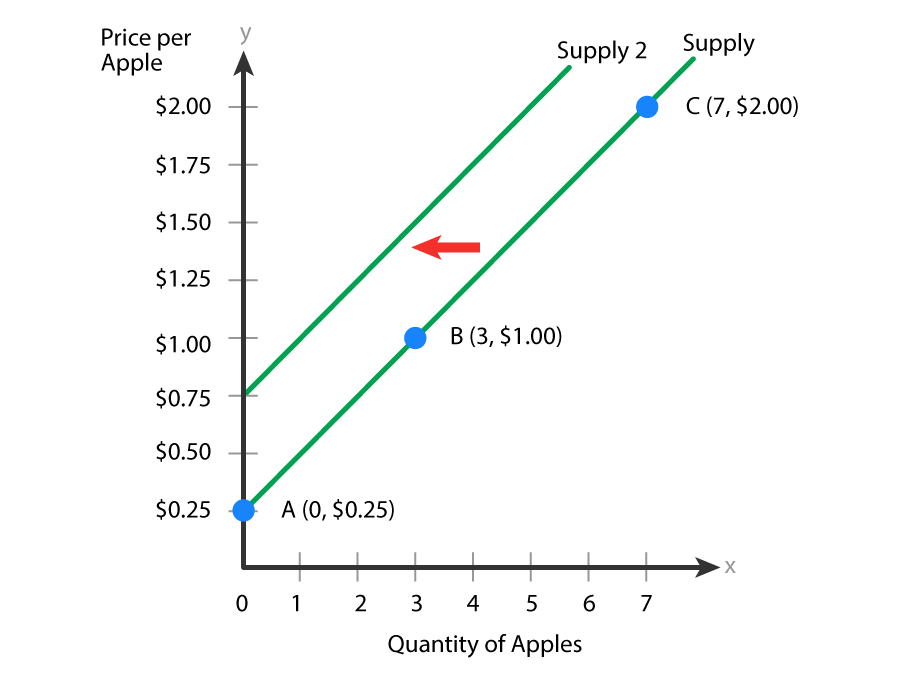
Suppose, however, the farmer got a better deal on his fertilizer, or if there was a decrease in another input price, like lower rent on a neighbor’s fam land, or workers who are paid less, or lower cost on machinery, it would create an increase in supply, shifting the curve to the right instead.
Technology isn’t what you think it is! It’s not the latest electronic gadgets or software. In economics, technology refers to the way in which resources are mixed in a technical recipe for producing a good or service.
EXAMPLE
Suppose we want to start a small business teaching people how to sail. We would need to figure out the technical "recipe" needed to accomplish this task–what mix of tools, processes, personnel, and other resources would allow this business to thrive. This could include questions like what size of space to rent and where, how many sailboats to buy, and how many workers to hire. As you can imagine, there are a multitude of ways we can write the technical "recipe" for a successful sailing school business. If you are a wise entrepreneur, you will choose the technical recipe, the technology, that provides both quality and low cost.Changes in technology can both improve and reduce our “bottom line.” Most advances in technology provide improvements in the way things get done. These typically reduce the cost of doing business. Hanging on to outdated techniques can raise the cost of production over time.
EXAMPLE
Businesses that rely on dial-up Internet rather than 5G, the fifth-generation technology standard for broadband cellular networks, spend more on lost worker productivity than other firms that adopt the new service.Suppose that our farmer purchases a new autonomous harvesting robot, a piece of capital equipment like a tractor, which is able to identify, pick, and deposit apples in seconds. This new technology makes apple picking more efficient and less expensive, compared to human farmworkers. Because the new technology improves production, the farmer is willing and able to supply a greater quantity of apples at all prices. The farmer now increases overall supply, causing the supply curve to shift right, shown below. Conversely, if the farmer insists on hand-picking every apple, then this technique would certainly decrease the overall supply due to higher costs.
The following graph shows the increase in supply, a rightward shift of the curve when Farmer Jones adopts a new technology that reduces production costs.
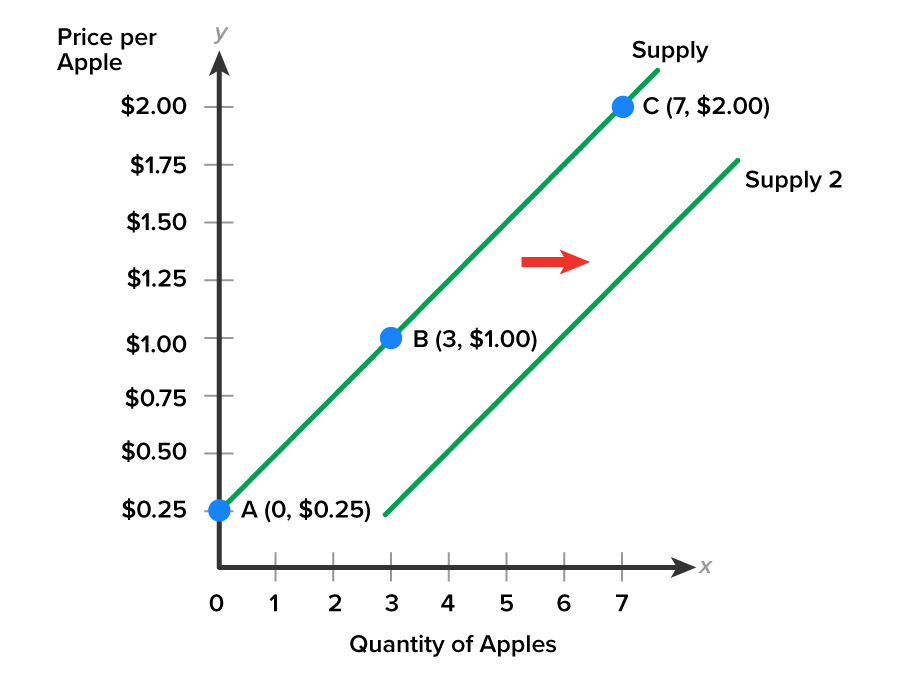
Both buyers and sellers make decisions based on their expectations about what might happen in the future. We have learned that consumers respond to expectations about future price changes. If buyers believe peanut butter will be priced higher in the near future, there will likely be a mass buying of peanut butter in the present. Similarly, suppliers make current production decisions based on their expected future income as it is dependent on the prices they can charge for their products.
If suppliers have good reason to believe that consumers will be slowing their spending, then businesses will adjust their production levels down and supply will decrease. Business income will decline because prices tend to fall during periods of low economic activity. When suppliers determine that economic activity will pick up, production levels will rise and supply will increase. As the economy comes out of a recession, shoppers become less cautious in spending. Businesses will step up production in anticipation of higher future sales.

Businesses are subject to taxes just like households. You are likely accustomed to paying taxes by having them deducted from your paycheck, and so you think about taxes as a reduction from your income. Most businesses, on the other hand, consider their taxes as one of the costs of production. As a result, an increase in taxes raises the cost of doing business, so higher taxes can lead to a decrease in overall supply.
On the other hand, businesses are sometimes recipients of financial payments from public funds, which are known as subsidies. Because a subsidy can lower the cost of doing business, it leads to an increase in overall supply; often, increasing supply is the reason why the government paid out the subsidies in the first place. Increases in government subsidies to businesses result in increases in the supply of those businesses' goods, while reductions in subsidies shift costs back to the businesses and may reduce the supply of their goods.
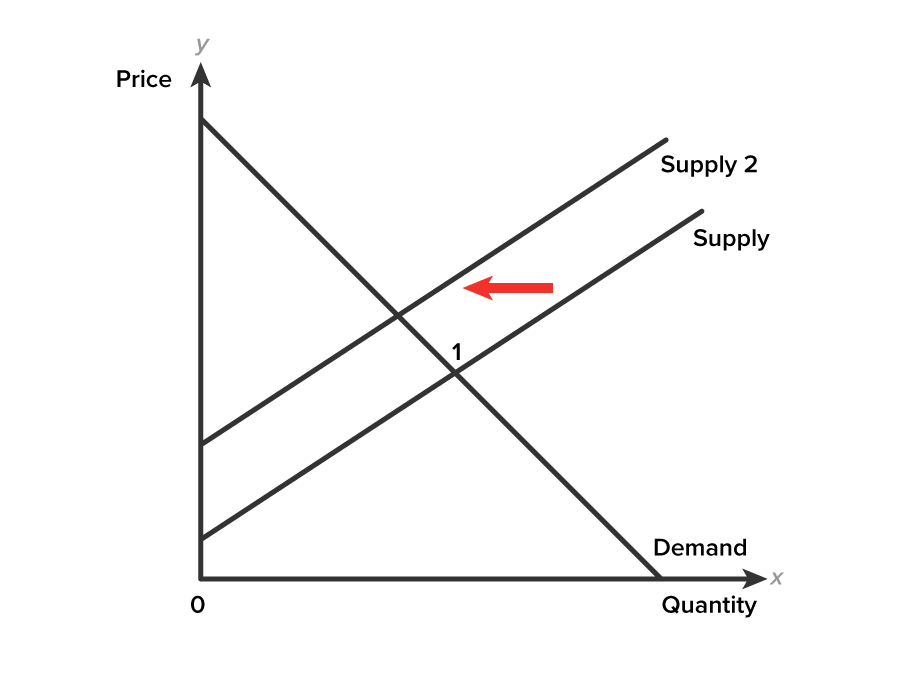
EXAMPLE
Agricultural businesses are recipients of farm subsidies. Boeing, General Motors, and Intel are the top three business recipients of subsidy payments; $15 billion, $8, and $6 billion dollars, respectively. Production subsidies reduce the cost of producing goods and services.So far we have focused on a number of factors that influence the willingness and ability of individual suppliers to offer products. What happens when the number of sellers overall changes?
Suppose we aggregate all the sellers who produce and sell bicycles meaning we consider together all the producers of bicycles and the bike shops that sell them. Doing so gives us a picture of the market supply for bicycles. Increasing or decreasing the number of sellers causes a change in supply. If the number of businesses producing bicycles increases, then market supply increases. If a number of sellers are bought out by one company, then the market supply of bicycles decreases.
EXAMPLE
One shrinking market is the global razor market and Procter and Gamble, the parent company of Gillette, is not so happy. Shaving has been a mainstay in the men’s grooming industry. So what changed? The ‘bearded look” has gained popularity among the millennials. Will the number of sellers in the global razor market shrink also?
When analyzing supply, demand, and market equilibrium, we simplify by assuming ceteris paribus and examine only one change at a time.
But in reality, there are potentially many factors that could impact either demand or supply or both demand and supply simultaneously. To figure out how economic events affect the two market outcomes of equilibrium price and equilibrium quantity, we use a four-step process.
 ) and quantity (
) and quantity ( ) along the axes in the diagram. We will need to know four standard pieces of information:
) along the axes in the diagram. We will need to know four standard pieces of information:
 ) and quantity (
) and quantity ( ) along the axes in the diagram.
) along the axes in the diagram.
 ) and quantity (
) and quantity ( ) along the axes in the diagram.
) along the axes in the diagram.

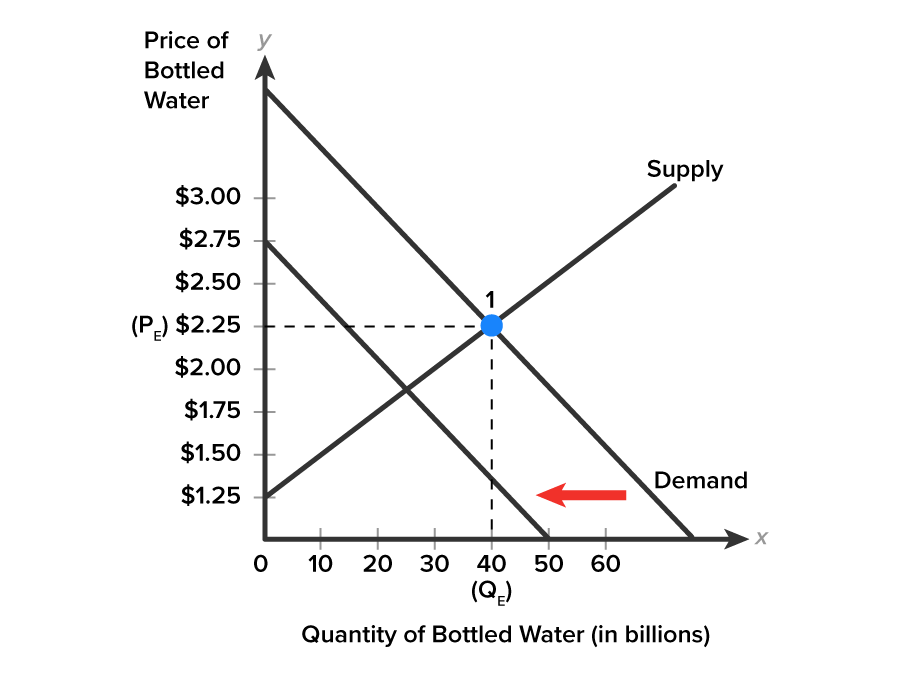
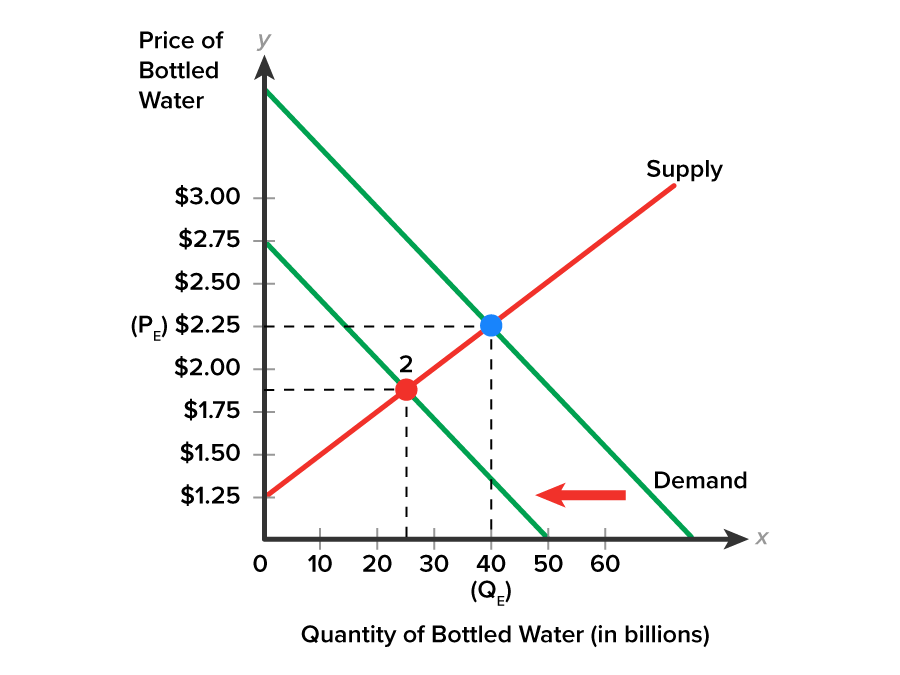
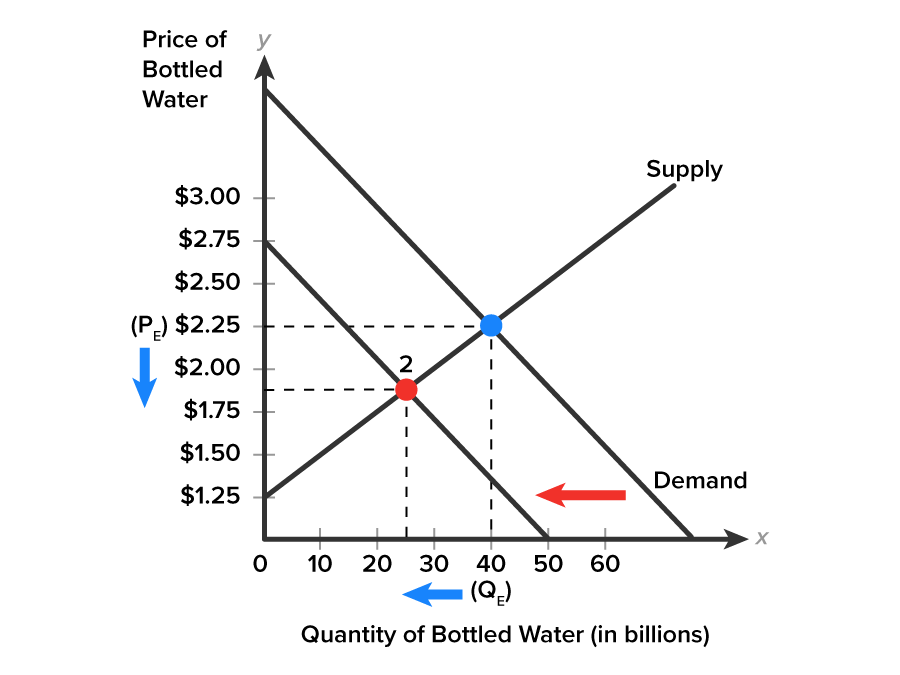
Events occurring both inside businesses and outside in the world impact markets. Market analysts keep in touch with the latest news to make predictions. You can do the same. Simply follow the five step analysis process.
Source: THIS TUTORIAL HAS BEEN ADAPTED FROM OPENSTAX “PRINCIPLES OF ECONOMICS 2E”. ACCESS FOR FREE AT https://openstax.org/books/principles-economics-2e/pages/1-introduction. LICENSE: CC ATTRIBUTION 4.0 INTERNATIONAL.
REFERENCES
Subsidy Tracker Top 100 Parent Companies. Good Jobs First. (n.d.). Retrieved May 25, 2022, from subsidytracker.goodjobsfirst.org/top-100-parents